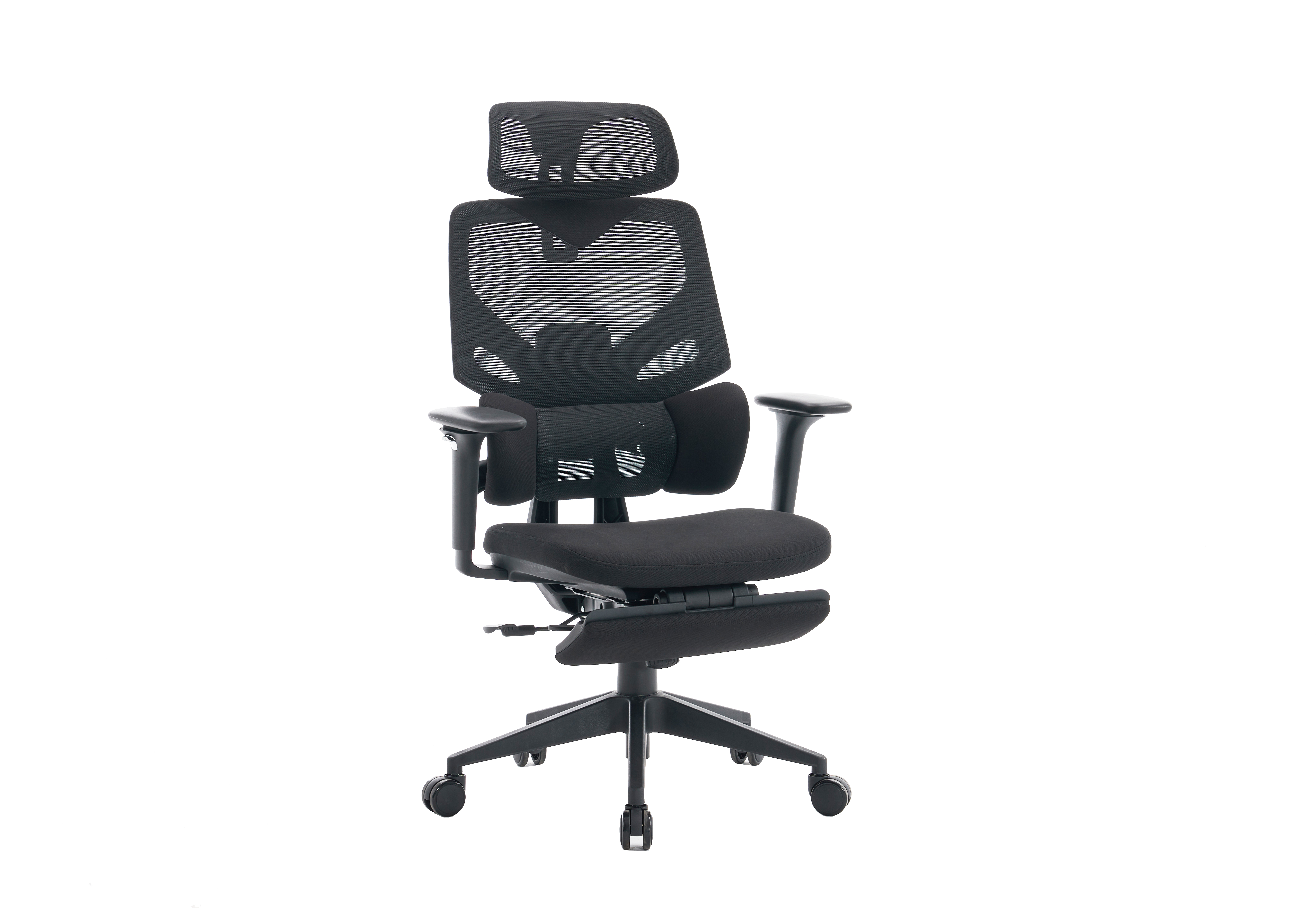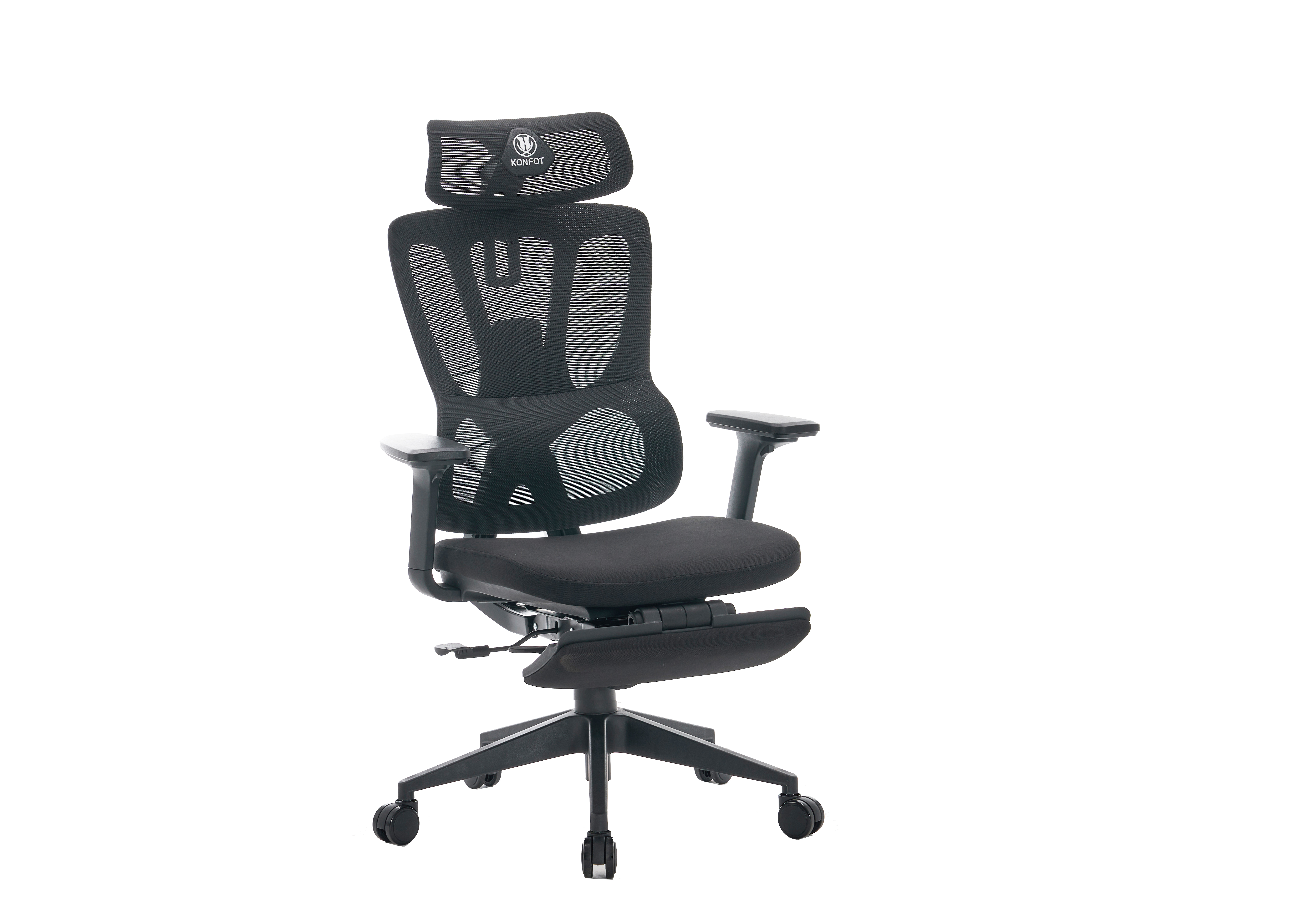NEWS
What Makes an Office Chair Comfortable for Daily Use?
Key Ergonomic Features for Maximum Comfort
Lumbar Support: Protecting Your Lower Back
Lumbar support is crucial in an ergonomic chair as it promotes the natural curve of the spine, reducing the risk of lower back pain associated with prolonged sitting. Quality lumbar support helps in maintaining the natural inward curve of the lumbar spine, preventing slouching and minimizing strain on the structures of the lower spine. A study published in the Journal of Occupational Health Psychology noted that proper lumbar support enhances comfort and productivity, reducing discomfort during long working hours. There are different types of lumbar support, including adjustable and built-in options, each offering unique effectiveness. Adjustable lumbar supports are particularly beneficial as they allow customization to suit individual needs, ensuring optimal spine support.
Seat Depth and Width: Proper Weight Distribution
The seat depth and width of an ergonomic chair play a significant role in the distribution of weight and overall comfort. Proper seat depth ensures that the user's back is supported while allowing the knees to maintain an appropriate distance from the seat edge, usually about 1-2 inches. Experts recommend seat widths ranging from 17 to 20 inches to accommodate various body types comfortably. Personalizing seat dimensions to avoid pressure points is emphasized by ergonomic specialists, highlighting its importance in preventing circulatory issues and promoting long-term comfort. Choosing a chair with adjustable seat depth can further optimize weight distribution by catering to differing body sizes and ensuring prolonged ease.
Breathable Mesh Design: Preventing Heat Buildup
The breathable mesh design found in many ergonomic chairs offers remarkable benefits in terms of temperature regulation, which is particularly valuable during prolonged use. The mesh material allows air circulation, effectively preventing heat buildup that can lead to discomfort. A survey by the American Society of Interior Designers reported that employee discomfort related to heat was significantly decreased with breathable chair materials. In addition to mesh, other materials like woven fabrics contribute to improved breathability, further enhancing user comfort. Ergo-friendly designs often feature these materials to maintain a pleasant seating temperature, ensuring that users remain comfortable and focused throughout the day.
Height Adjustment for Proper Leg Alignment
Height adjustment is pivotal for achieving proper leg alignment, an essential factor for comfort in any office setting. Ergonomic guidelines suggest that adjustable seating is crucial to accommodate the diverse heights of users, ensuring that each individual can find a position where their feet are flat on the floor and knees are slightly lower than the hips. This alignment not only prevents undue strain but also promotes circulation and reduces stress on the lumbar discs by maintaining pelvic rotation within a controlled range. Therefore, investing in an ergonomic office chair with adjustable height features ensures we can maintain a comfortable posture tailored to our individual needs and work environments.
4D Armrests: Reducing Shoulder Strain
The incorporation of 4D armrests into ergonomic chairs has transformed user comfort by significantly reducing shoulder and neck strain. These armrests allow for a multitude of adjustments, including height, width, depth, and pivot functionality, enabling us to customize our sitting experience precisely. Testimonials often highlight how 4D armrests contribute to a relaxed shoulder position, alleviating tension during prolonged periods of desk work. By providing necessary support, these adjustable features facilitate a more ergonomic posture, allowing our arms to rest naturally while reducing the risk of musculoskeletal discomfort.
Tilt Mechanisms for Dynamic Sitting
Exploring the diverse tilt mechanisms available in ergonomic chairs reveals their invaluable contribution to dynamic sitting. These mechanisms range from simple tilting to more advanced synchronized options that promote active seating adjustments. Ergonomic research consistently supports the idea that dynamic seating can prevent muscle fatigue by encouraging frequent posture shifts. Modern office chairs strike a balance between stability and movement, allowing for flexibility without sacrificing support. This combination helps us maintain our comfort and productivity levels throughout the workday, reinforcing the need for versatile office chair designs.
Top Ergonomic Office Chairs for Daily Use
Master Ergonomic Mesh Office Chair - Adjustable High Back
The Master Ergonomic Mesh Office Chair - Adjustable High Back is renowned for its adjustable features and breathable mesh design, offering exceptional comfort and back support. Users frequently praise its ability to accommodate various height and recline preferences, making it a standout for long hours of sitting. Compared to other market options, it delivers great value for money, providing high-end features without a hefty price tag.
Modern High Back Mesh Chair with Adjustable Height
The Modern High Back Mesh Chair with Adjustable Height boasts a sleek modern design, coupled with considerable adjustability, making it a favorite among professionals. Ergonomic experts have commended its ability to support posture, attributing this to its intelligent back support system. While offering premium features, it remains affordable within the ergonomic chair market, making it an attractive option for those seeking both style and functionality.
Swivel Mesh Office Chair with Breathable Design
Featuring a swivel base, the Swivel Mesh Office Chair with Breathable Design excels in providing flexibility and ease of movement, essential for dynamic work environments. User feedback often highlights its comfort over prolonged use, attributed to its breathable mesh, which helps maintain a fresh feel. The chair's durability is noteworthy, withstanding daily wear and tear while preserving its supportive structure.
High Back Chair with Lumbar Support & Footrest
The High Back Chair with Lumbar Support & Footrest is engineered to promote a healthy sitting posture, vital for maintaining spinal health. The adjustable footrest adds an extra layer of comfort by relieving pressure on the lower legs, while the lumbar support ensures proper back alignment. Experts recommend chairs with dedicated lumbar support for those wishing to minimize back strain, making this model a wise investment.
Full Mesh Ergonomic Chair with 4D Armrests
Combining full mesh technology with 4D armrest adjustments, the Full Mesh Ergonomic Chair with 4D Armrests is a model of modern engineering. Users rate it highly for comfort and the versatility of its armrests, which adjust in multiple directions to suit a variety of needs. This chair stands out in the ergonomic market, offering innovation and comfort that meet diverse user demands.
Maintaining Comfort: Posture and Long-Term Use
Proper Sitting Position for Reduced Fatigue
Maintaining the correct sitting position is crucial to reducing fatigue during long working hours. Studies have shown that proper posture not only contributes to physical comfort but also enhances workplace productivity. When seated, ensure that your feet are flat on the ground and your knees are at a 90-degree angle. The back should be fully supported by the chair's backrest, and the computer screen should be at eye level to avoid straining the neck. Adjusting workspace ergonomics, such as desk height and chair adjustability, can significantly contribute to maintaining comfort.
Cleaning and Maintaining Chair Components
Regular maintenance of your office chair is key to extending its life and ensuring continued comfort. Cleaning different chair materials properly involves distinct approaches: for instance, leather requires conditioning to prevent cracks, while mesh can be vacuumed to remove dust. For fabric chairs, use a mild soap solution for spot cleaning. According to industry guidelines, basic cleaning should be done bi-weekly, with a deep cleaning every six months. This routine not only keeps the chair fresh but also detects any loose or worn-out parts that could compromise comfort and support.
When to Upgrade Your Office Chair
Recognizing the signs that it's time to upgrade your office chair can prevent discomfort and health risks. Persistent back pain, inability to maintain proper posture, and visible signs of wear such as sagging cushions or broken parts are indicators for an upgrade. Experts suggest that ergonomic chairs have a longevity of about five to ten years with consistent use. Upgrading your office chair can lead to improved productivity and reduced health risks, making it a worthwhile investment in your workplace wellbeing.




